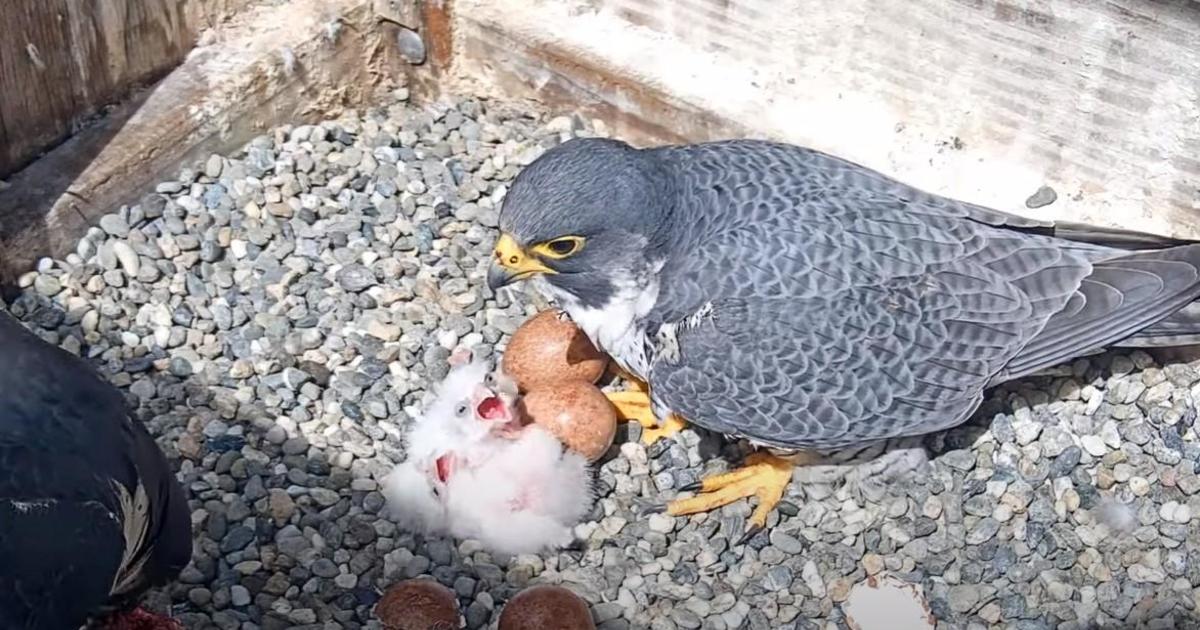HealthWatch: Scientists Investigate Mysterious Decline Of California Sea Otters
MOSS LANDING (CBS 5) -- A group of scientists are keeping a close eye at the health of sea otters off the California coast. They may be cute and furry, but California sea otters are facing a mystery threat.
The Southern Sea Otter once thrived along the Pacific Rim from Japan to the tip of Baja California. But a brutal hunt for their valuable fur decimated their population.
Today, the sea otter remains a threatened species under the Federal Endangered Species Act.
"The Southern Sea Otter is an animal that's totally unique to California," said Dr. Melissa Miller with the California Department of Fish and Game.
The otters, because of their unique biology, live in precarious times. These creatures eat a third of their body weight every day. They must find enough food to feed their high metabolism, which is needed to keep the otters warm in cold waters.
"In the best of circumstances, they're on a razor's edge," said Dr. Mike Murray with the Monterey Bay Aquarium.
The sea otters of California were the comeback kids of the coast. Their population was recovering. But now, scientists are detecting a troubling shift. For two years in a row, completed population surveys show their numbers have taken a dive.
To unravel the mystery of what's ailing them, a group of investigators joined forces. Miller and Murray are among them, along with Dr. Karen Shapiro of the UC Davis School of Veterinary Medicine.
Miller performs necropsies on dead otters found along the coast to determine what killed them. Shapiro is an expert in waterborne infections, and Murray is the top vet at the Monterey Bay Aquarium, where stranded otters find a home and sanctuary.
These scientists are uncovering not just one, but a variety of threats. Not long ago, Miller examined a dozen dead sea otters, brought in with bright yellow gums, and yellowed eyes.
"When I would go to pick up the liver and examine it more closely even in an animal that just died what I would notice is that the liver would fall apart in my hands," Miller said.
Miller and her colleagues discovered how toxic algae, found in a nearby freshwater lake, had worked its way into the coastal seawater and into the shellfish, serving up a poisonous snack to hungry otters.
"It can kill animals within 24 to 48 hours," Miller said.
The algae are nourished by urban and agricultural runoff.
"The bigger problem is how we manage our water resources on land," said Miller.
Shapiro faced a different dilemma. A parasite called toxoplasmosis, commonly found in house cats, was ending up sea otters and ravaging their brains.
"Somehow this parasite gets from cat feces through rivers and estuaries into the coasts where it is somehow existing in the waters in sufficient levels to infect sea otters," Shapiro explained.
In an experiment, using harmless surrogates, Shapiro discovered the parasite's eggs are buoyant, and can travel quickly through fresh water. Once in salt water, they clump and sink, ending up in snails and shellfish. Then otters eat them, and get infected.
There are specific areas that are high-risk for otters. The problem is greatest in areas where wetlands are damaged or destroyed. Wetland vegetation prevents the parasite from reaching coastal water.
"Whenever and where ever possible, the few remaining healthy wetlands we have in California should be conserved," Shapiro said.
"You know, otters are a wonderful indicator of the health of this system," Murray said. At the aquarium, Murray and his colleagues are involved in several projects looking at the health of otters. They tag wild otters with high tech tags that allow the creatures to be followed. Another project analyzes samples of the wild otters' whiskers.
"Just little tiny sections evaluates carbon and nitrogen isotopes and based on that that can give us a prediction of what this animal was eating," Murray said.
And what they eat, he explained, is of utmost importance. If otters eat sea urchins, urchins will be kept in check, and that keeps the kelp forests healthy. The kelp forest is an important buffer against storms as well a nursery for marine life.
"If we lose this ecosystem, things are going to change dramatically and not change for the better," Murray said.
All three scientists remind Californians how otters are not the only creatures that live and eat along the coast. The otters are known as a keystone species: if they are thriving, so too might all creatures.
(Copyright 2012 by CBS San Francisco. All Rights Reserved. This material may not be published, broadcast, rewritten, or redistributed.)



